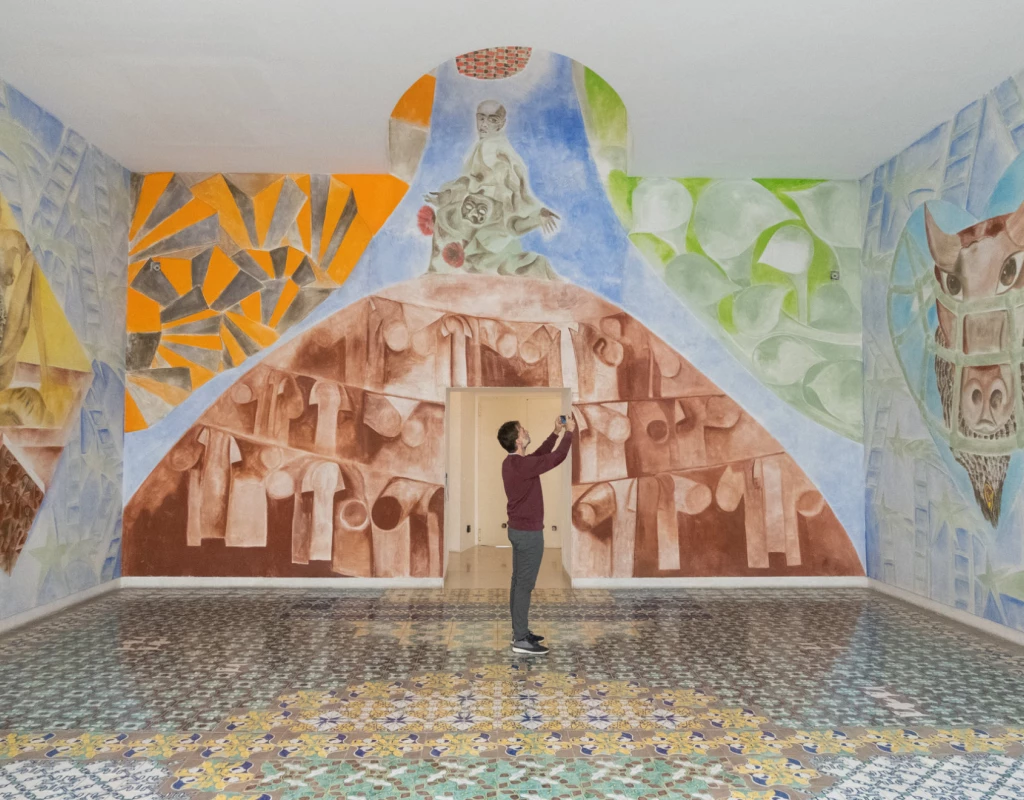What would it be like to walk into a room where fragments of memories, voices and perceptions have shape and color? What if this room were the inner universe of an artist born in Naples but always a nomad?
Ph. Anna Monaco
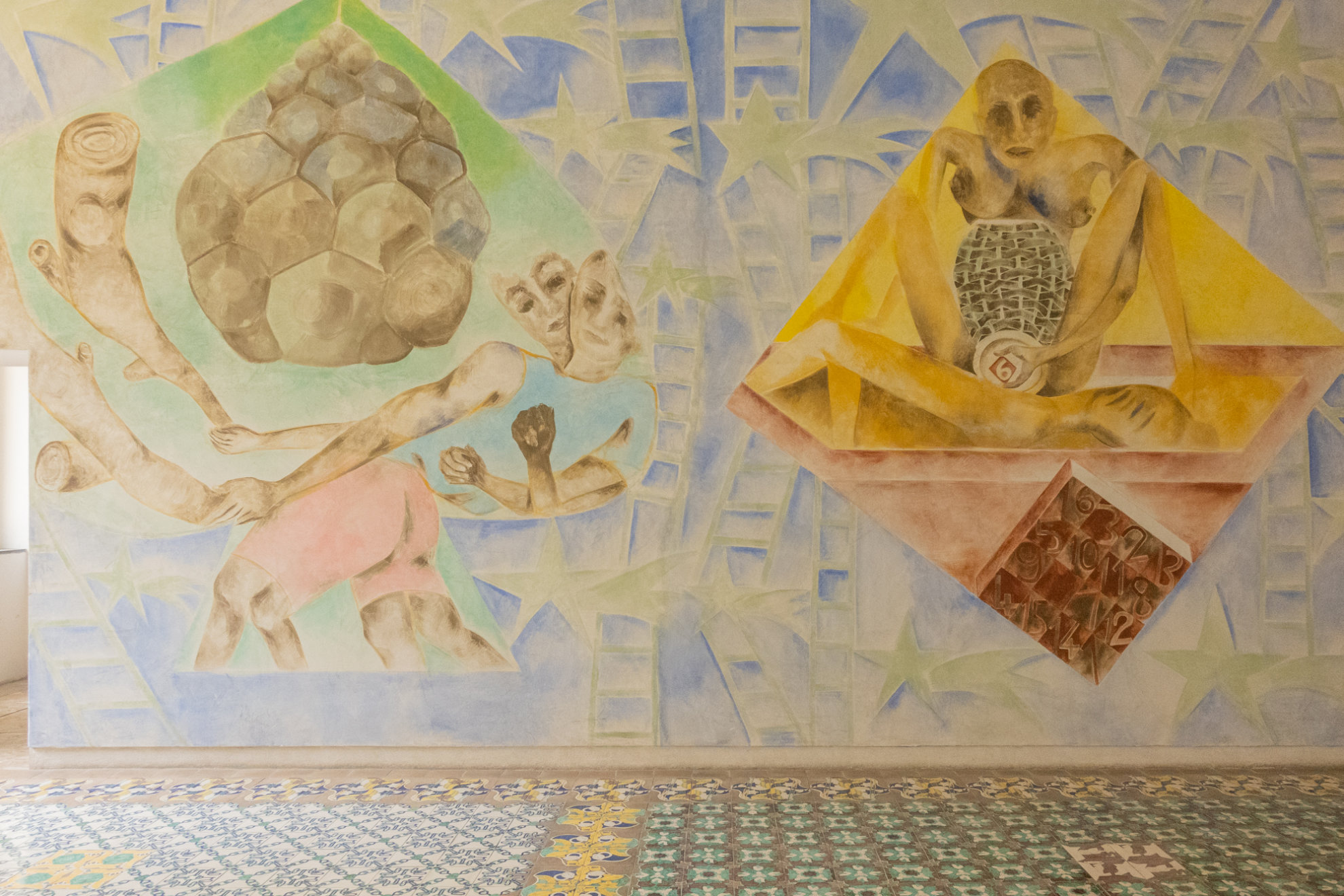
It would be a room of the Madre Museum, the one dedicated to Francesco Clemente. In 2005, when a nineteenth-century building in Via Settembrini became the location of the Donnaregina Museum of Contemporary Art in Naples, international artists were invited to create works for a specific place. Among these was Clemente, author of “Ave Ovo”. A greeting to his origins, a greeting to the new museum that was able to bring the artist back to his native city.
Ph. Anna Monaco
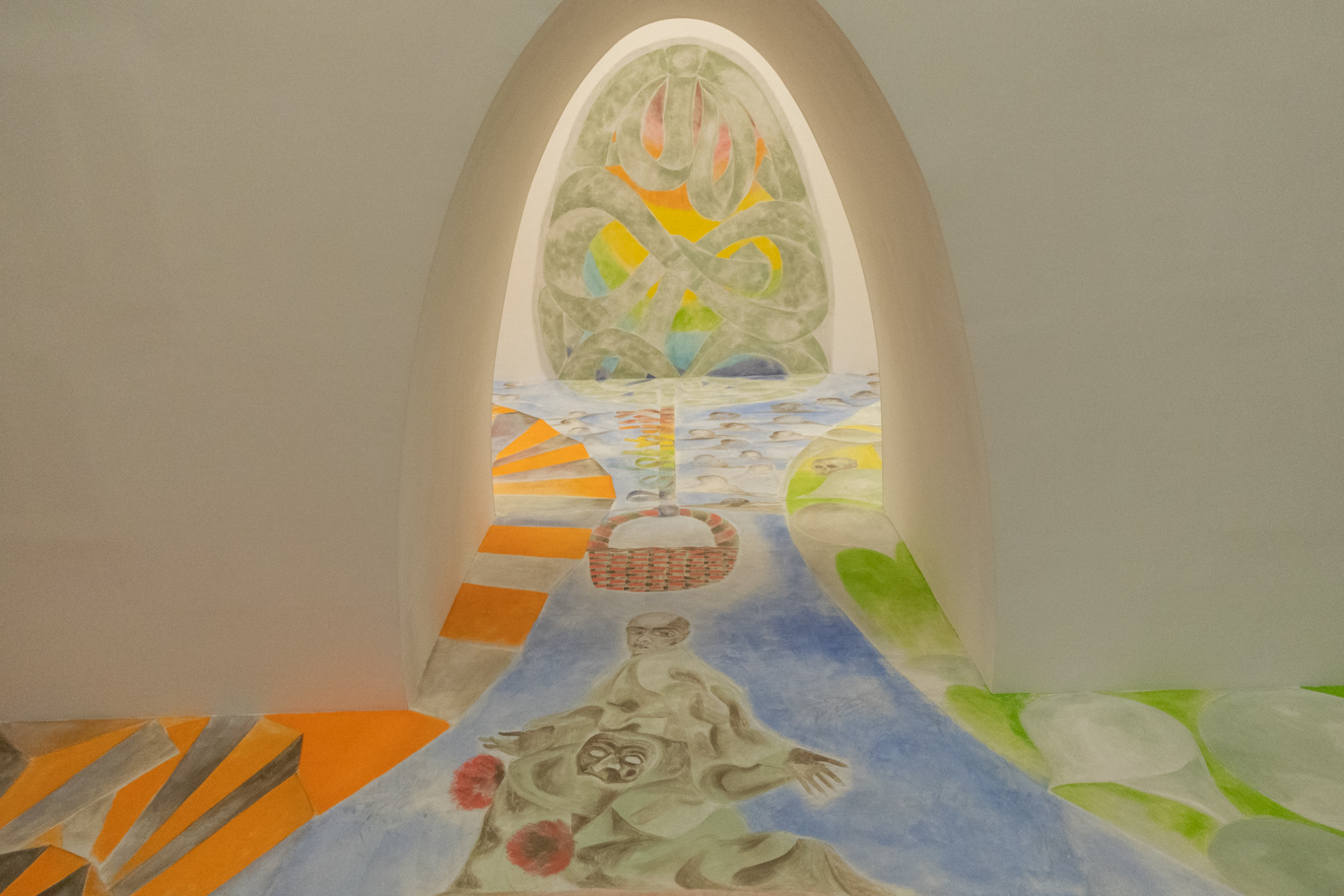
In fact, Francesco Clemente was born in Naples and soon began to wander: he moved to Rome where he studied architecture for a while and met artists such as Alighiero Boetti, who were then crucial for his artistic career. At the age of 19 he went to India on a trip that opened up new spiritual horizons for him, an experience that made this country one of his favorite places. Then he was in New York, in the same years as Andy Warhol and Basquiat. Distant places that influenced Clemente's artistic research, always so fragmented and discontinuous, like his self-portraits which became the recurring motif of his art.
Ph. Anna Monaco
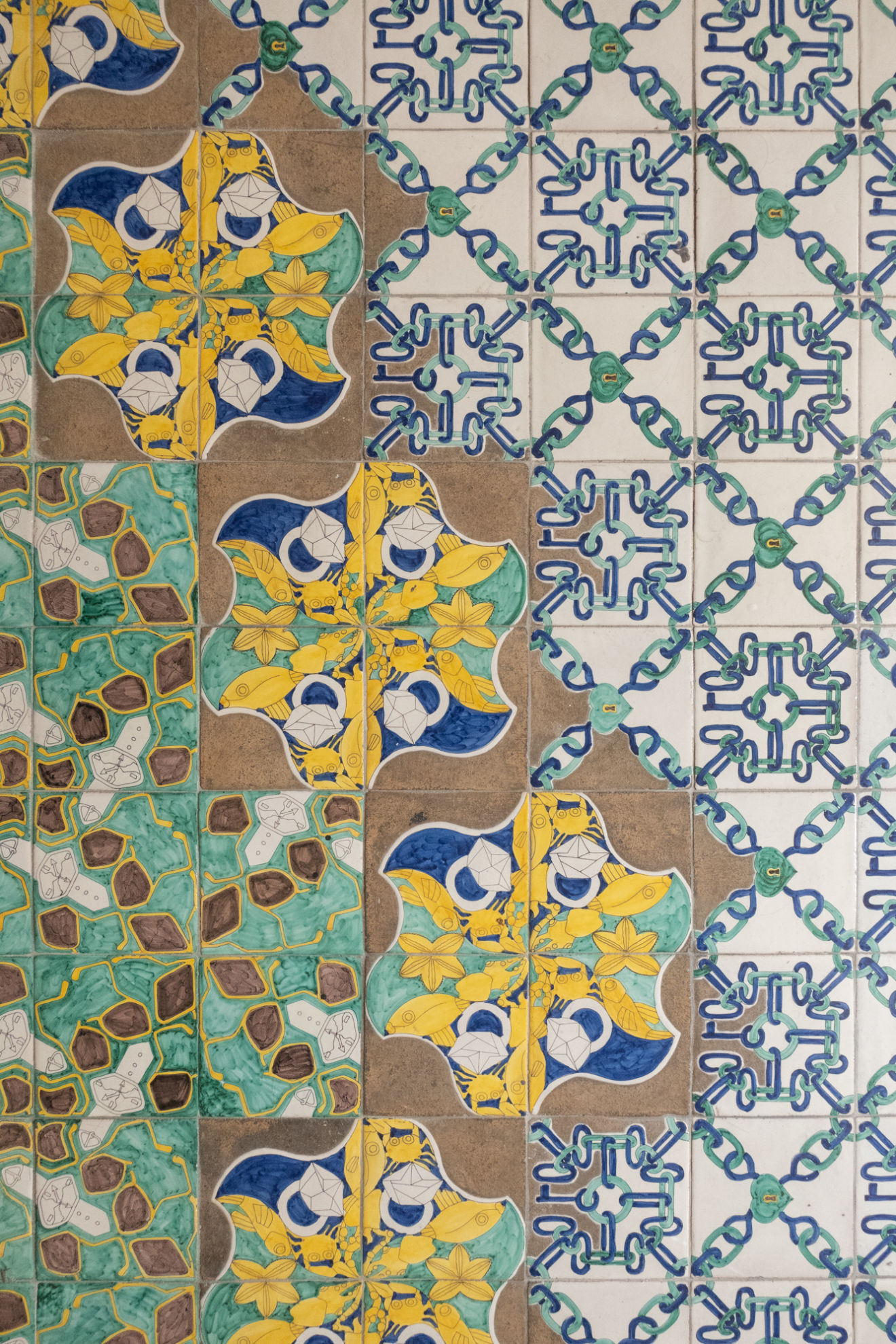
Ph. Anna Monaco
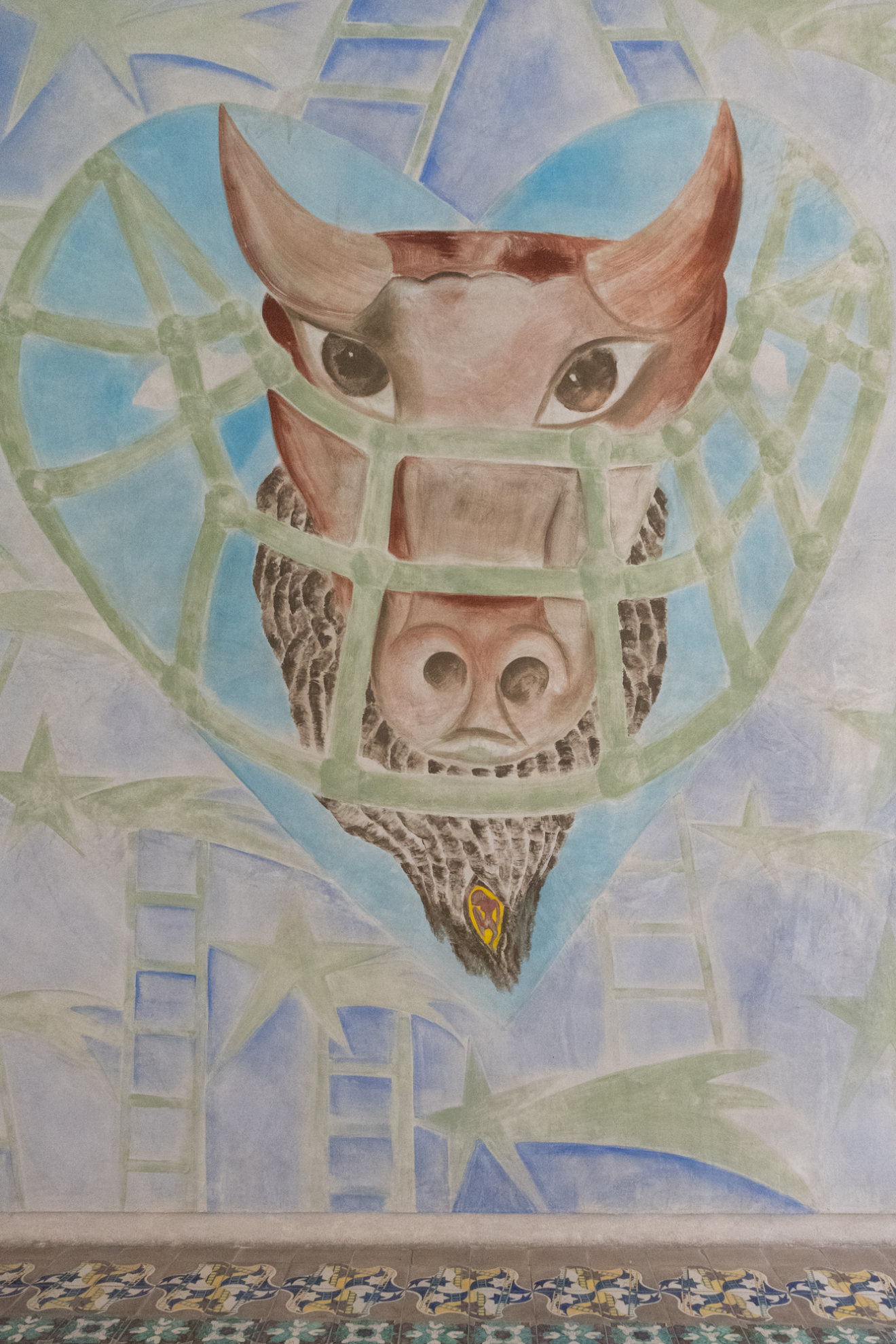
A self-portrait is also in the middle of the monumental Neapolitan work “Ave Ovo”, which surprises for the technique used: fresco on the walls and majolica on the floor. Unusual for a contemporary artist, but not for Francesco Clemente who loved to experiment in painting as in mosaic. The homage to the Neapolitan “riggiole” (tiles), such as those of the Church of San Giovanni a Carbonara or those of the Cloister of Santa Chiara, is in an almost classic-looking floor for the colors used (green, white, yellow and blue) but psychedelic for the human and animal shapes that it shows and hides at the same time. Just as modern is the vortex of colors and bodies that crowd the walls, on two levels: a fresco that is a travel notebook full of moments and moods, which can be understood only by those who have been able to experience firsthand.
Ph. Anna Monaco
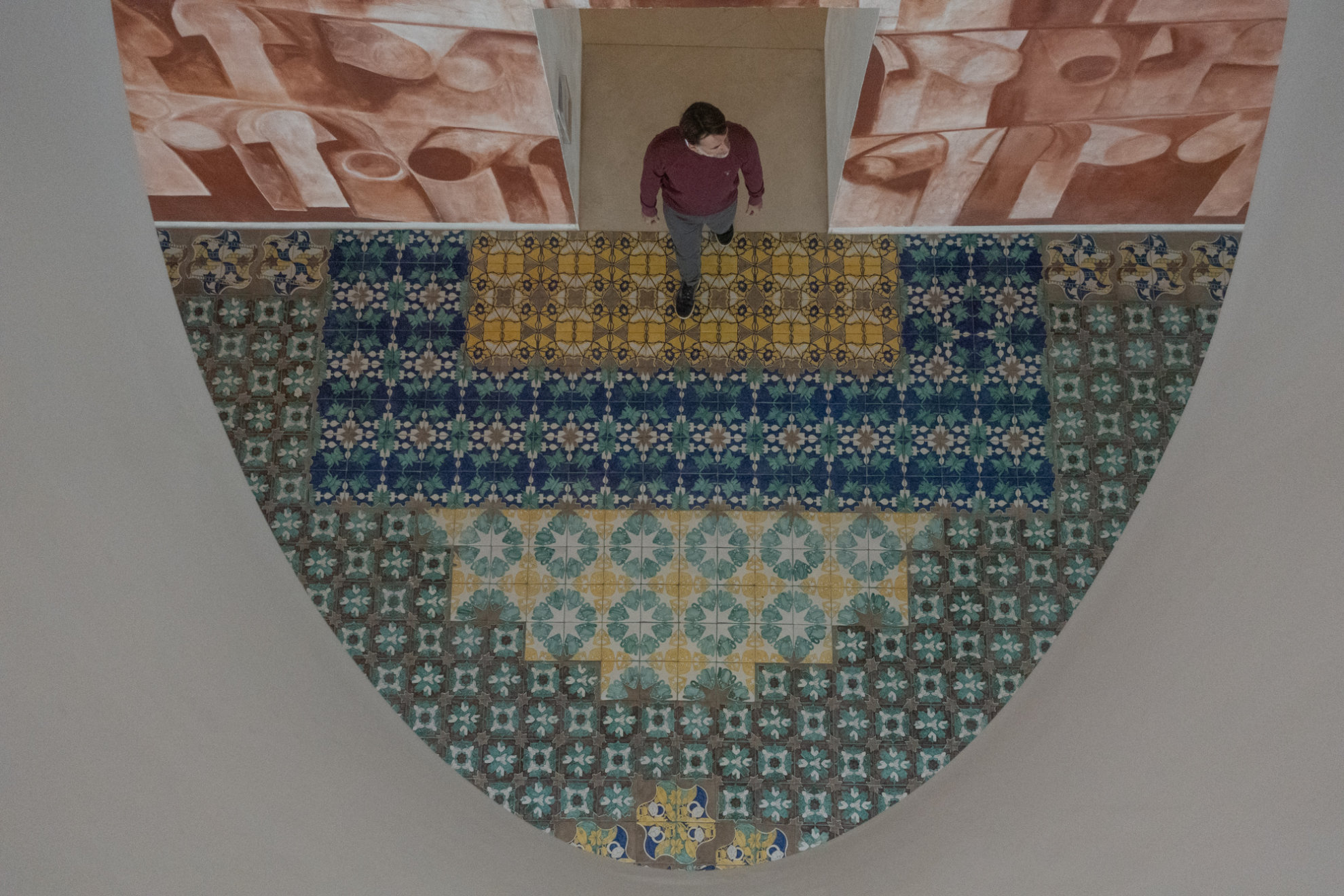
Some objects, however, speak a little to everyone. They are the symbols of a Neapolitan spirituality, such as skulls, the mask of Pulcinella and then the self-portrait that almost takes the form of a divinity. There is no need to give a unique meaning to what you see. Whoever enters this room of the Madre museum has to stop and listen to a story that comes from afar, from the artist's origins.
